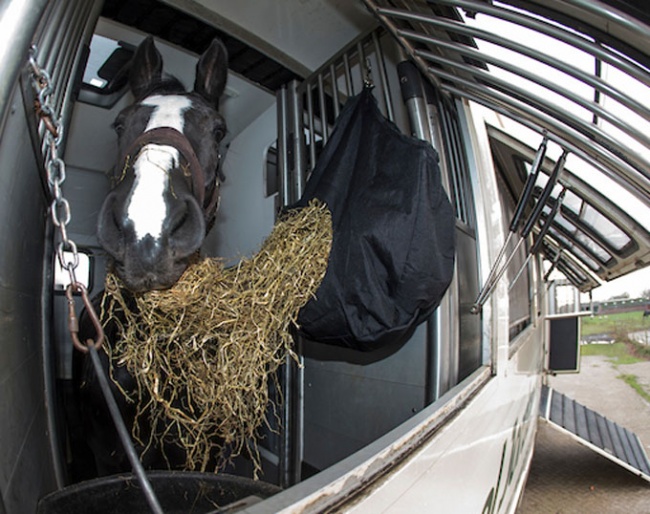
At the 2017 Annual ISES Conference, researchers from the several Australian universities headed by Barbara Padalino presented their findings on their study of behavioural, clinical and respiratory responses to 8-hour transportation in horses. Transportation may cause health problems in horses. The study was conducted to examine the relationship between behaviour during transport and the occurrence of respiratory inflammation.
Horse behaviour en route predicted clinical and respiratory outcomes. This study demonstrated that horse behaviour whilst travelling may be a useful indicator of poor health and welfare, and should be used to identify horses suffering from a high level of stress during the journey and subsequently at increased risk of transport-related respiratory disease.
The Study
The study documented the effects of transport on behavioural, clinical and respiratory parameters in horses identifying possible associations between them. Eleven horses with experience in travelling were subjected to 8 hour transportation without food and water.
Clinical examination, respiratory endoscopy with tracheal wash (TW) aspiration and venous blood collection was performed before and after the journey (AJ). TW were submitted for bacteriological evaluation. Horse behaviour en route was recorded using an ethogram during the first 25 minutes of each hour of the journey and the 25-minute rest stop.
Findings
Transportation caused a significant increase in cortisol and creatine kinase and activated an acute phase response with neutrophilia, hyperfibrinogenaemia and hyperglobulinaemia. Transportation resulted in an increase in the proportion of neutrophils in TW, tracheal mucus and TW bacterial concentration, along with reduced bacterial diversity due to an increase in Pasteurellacea.
Journey stage (from 1st to 8th hour) had a significant effect on horse behaviour. The frequency of stress-related behaviours (including licking or chewing, putting the nose outside and touching the rubber tie cord) was greatest in the first hour of travel and tended to decrease as the journey progressed. Total balance-related behaviours (including leaning on stall rails, loss of balance, movement in any direction) decreased until the 5th hour of the trip before increasing to its peak during the 8th hour.
The amount of time spent in a head down position increased during the journey. Horses that lowered their heads for less time and showed more stress-related behaviours had higher physiological stress and inflammation markers, increased tracheal mucus and higher TW bacterial concentration AJ.
Before the journey 6 of the 11 horses proved to have higher tracheal inflammation scores. These horses had abnormal lung auscultation AJ, an overall higher concentration of bacteria in their TW and an increased percentage of neutrophils in TW at five days AJ in comparison to the other transported horses.
Conclusion
The findings confirm that transportation is a stressful event for horses and there are demonstrable associations between behaviour during transport and health outcomes. While transport-related health problems are multi-factorial, scoping before journey, clinical examination including auscultation before and after journey, behavioural observation during transport may provide insights into horses at elevated risk of transport associated respiratory diseases.
Source: ISES - Photo © Dirk Caremans
Related Links
New Zealand's Julie Brougham on Board with IRT To Go All the Way To Rio
Vets Collaborate to Improve Long-distance Horse Transport
How Glanders in Germany Has Affected Global Equine Transportation
Equine Travel Restrictions from Germany to Australia End 30 July 2015
Hendra: The Virus, The Vaccine, The Debate